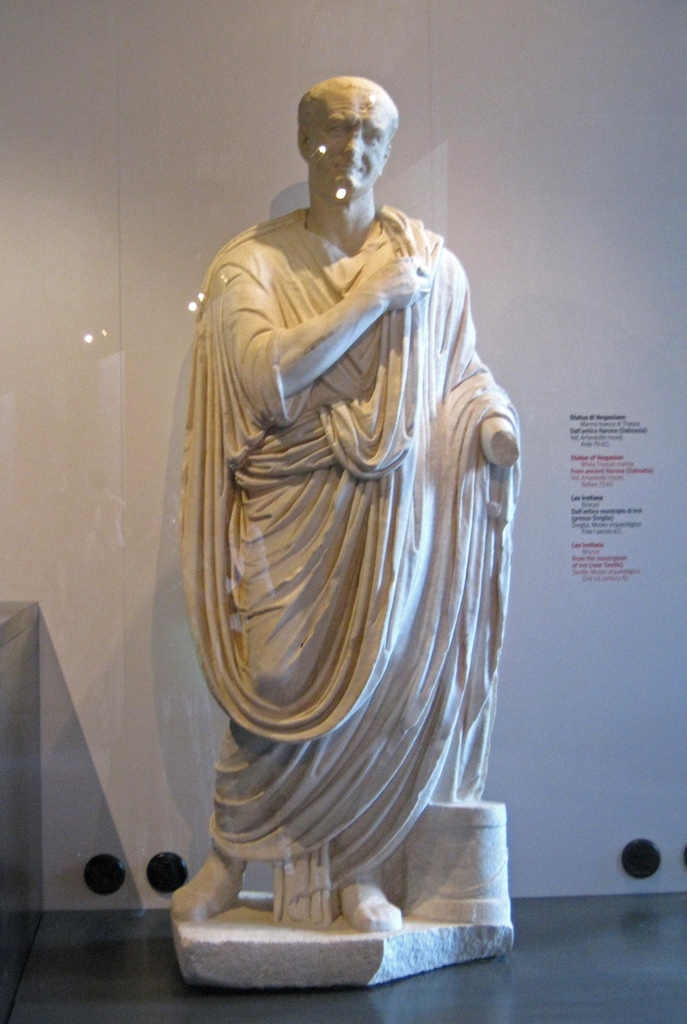Any tourist in Rome would be unworthy of the honorable name without a visit to the Colosseum.
In fact, anyone in the right part of the city would have a hard time ignoring it, as it's really
big. The Colosseum was first completed in 80 A.D. The spot where it was built was originally
covered with dense habitations, but after they were destroyed in the great fire of 64 A.D., the
emperor Nero turned the area into a personal lake for a palace he had built nearby. The emperor
Vespasian had the lake drained, and construction on the Colosseum began in 72 A.D. It was
completed eight years later, when his son Titus was emperor.
Vespasian
The Colosseum was originally known as the Flavian Amphitheater, reflecting the family name
of Vespasian and Titus. The name "Colosseum" seems to have been related to a gigantic
statue of himself which Nero had built nearby (undoubtedly likened by some to the Colossus
of Rhodes in the Greek isles), and which Vespasian left standing. The Colosseum was used
for gladiatorial competitions, as well as executions of people and wild animals. There are
reports that 9,000 animals were killed during its inaugural games in 80 A.D. The arena
held about 50,000 people, who were organized in tiers by social class. The best seats were
reserved for the emperor and the vestal virgins, who had private entrances. For the public
at large, there were 76 numbered entrances, making it easy to empty the stadium of
spectators reasonably quickly. Many of the concepts introduced in the design of the
Colosseum (and even sometimes the name "Colosseum") have been borrowed for modern sports
venues.
A few structural facts:
-
The arena is elliptical in shape, with a length of 615 feet and a width of 510 feet.
-
The height of the outer wall is 157 feet.
-
The event surface would not have been quite large enough to hold a modern football game,
as it was only 287 feet long. It was 180 feet wide.
-
The event surface was made of wood, covered with sand.
-
Beneath the event surface was a two-level complex of corridors, called the hypogeum
(added after the initial construction, under the emperor Domitian), used for holding
animals, prisoners and gladiators (who were slaves) prior to their appearances in the
arena above. Ramps and pulley systems were used for moving around stage scenery and caged
animals.
-
The outer wall of the Colosseum, much of which is gone, was faced with travertine stone.
There were three levels of archways which originally held statues, and which were
surrounded by progressively more elaborate types of columns (Doric, Ionian, and, finally,
Corinthian) with increasing height. Above the arched levels was a level with a lesser
number of small windows. Some of the outer wall remains on the northern side of the
arena.
-
Much of the missing structure of the Colosseum was destroyed by earthquakes over the
centuries, with people having carted off most of the rubble to be used for other purposes.
The travertine facing was attached to the underlying structure with iron clamps, and in
many places the clamps were chiseled out so the travertine could be made off with, leaving
characteristic "pockmarks". In the 18th Century, Pope Benedict XIV declared the Colosseum
a sacred site (because of the Christians martyred at the site), and this probably slowed
the scavenging somewhat.
-
Much of the remaining structure is crumbling due to erosion, and a number of efforts have
been made to slow the process. Even stone yields to the elements, given enough time.
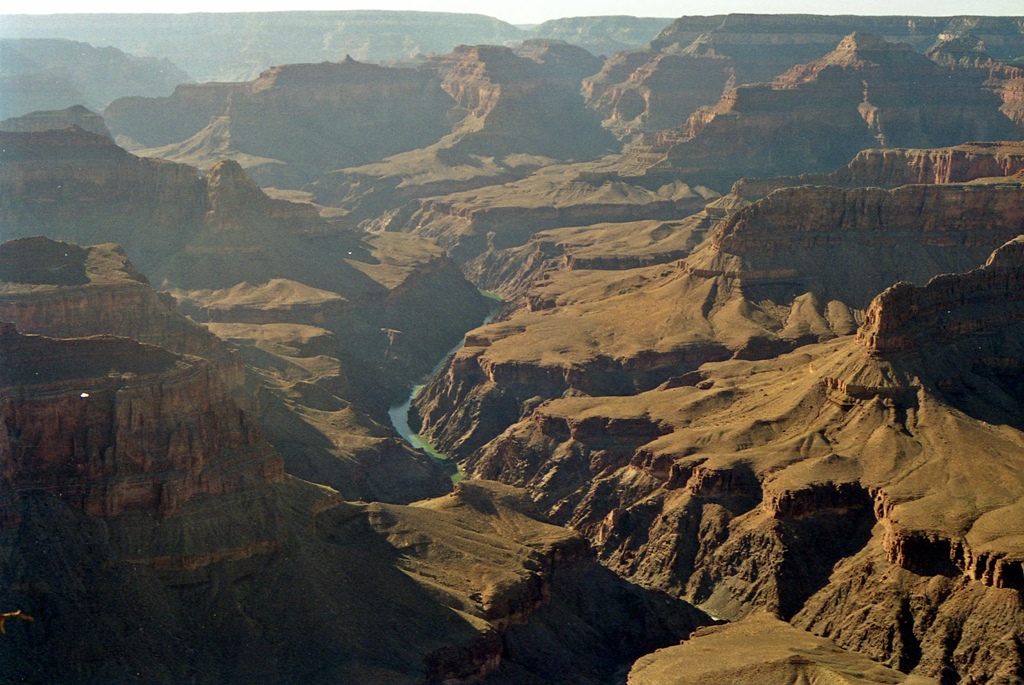
Grand Canyon, Arizona
Additional concerns for the structure come from the constant vibrations originating
from the Colosseo Metro stop, just across the street. Oblivious to these concerns
at the time, we arrived at this stop following a short trip from the Spagna stop.
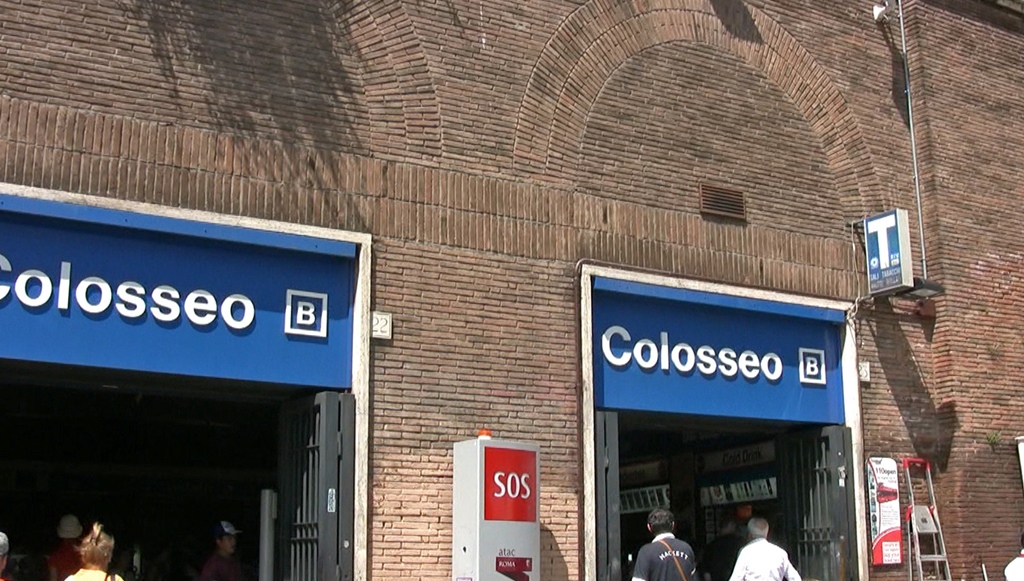
Colosseo Metro Station
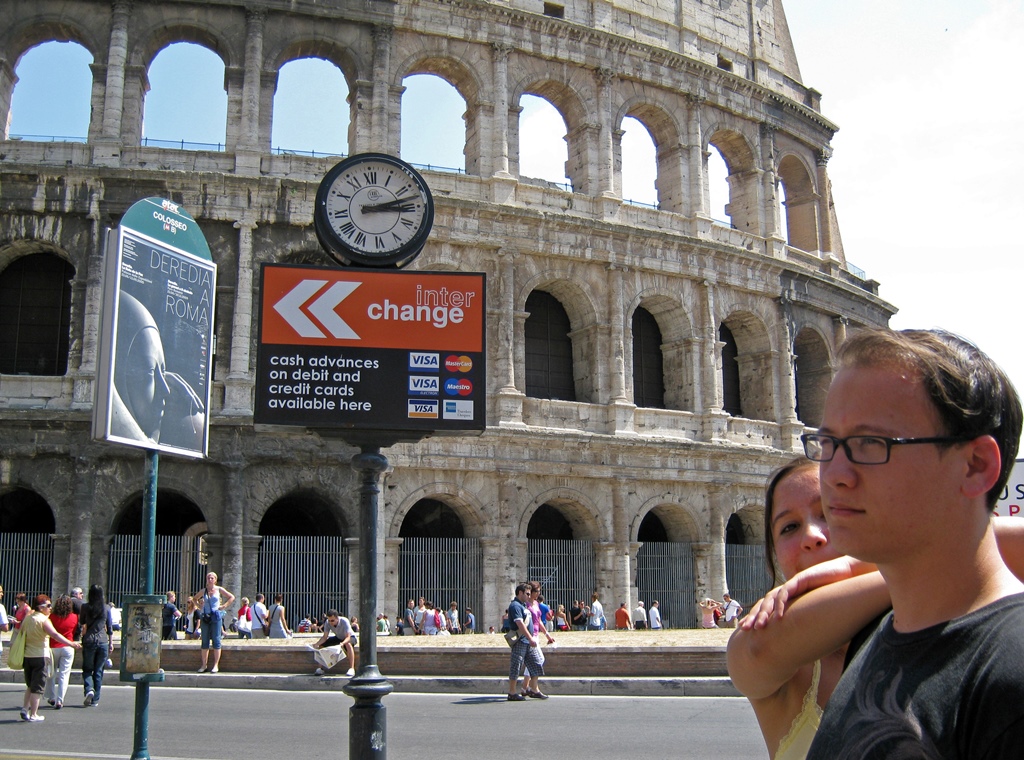
Connie and Philip and Colosseum
Across from the Colosseum
We had to cross a street to get to the Colosseum, but once across we were safe from
vehicular traffic, as most of the area immediately surrounding the Colosseum has been
pedestrianized. This area is also safe for sellers of overpriced souvenirs and
refreshments, and (apparently) for pickpockets, so one must remain alert. In addition,
one has the opportunity to pose for photographs with genuine Roman centurions, who
somehow know how to operate digital cameras. They also accept modern currency.
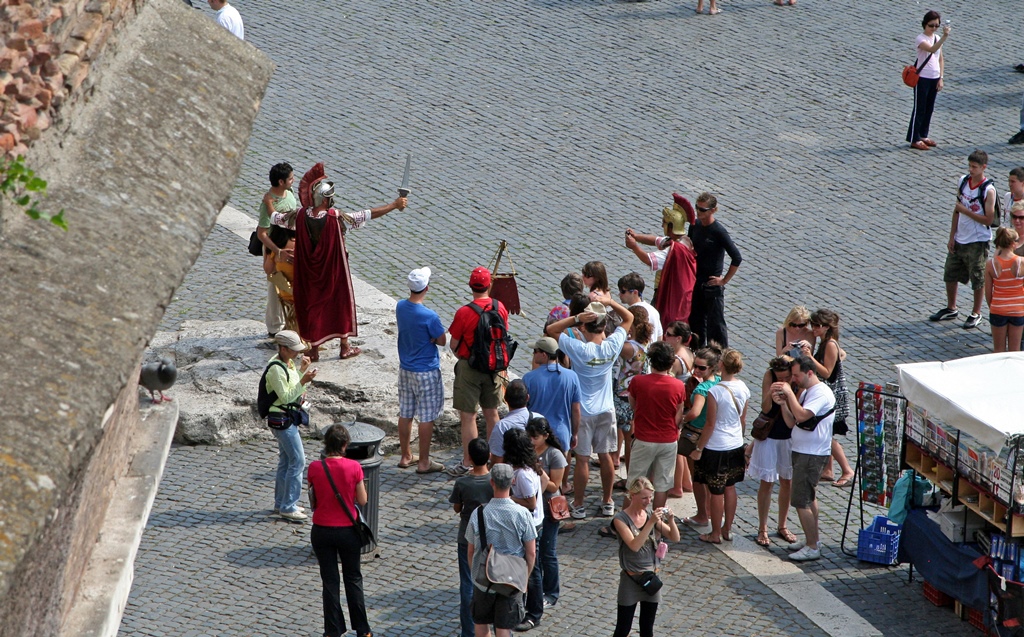
Helpful Centurions
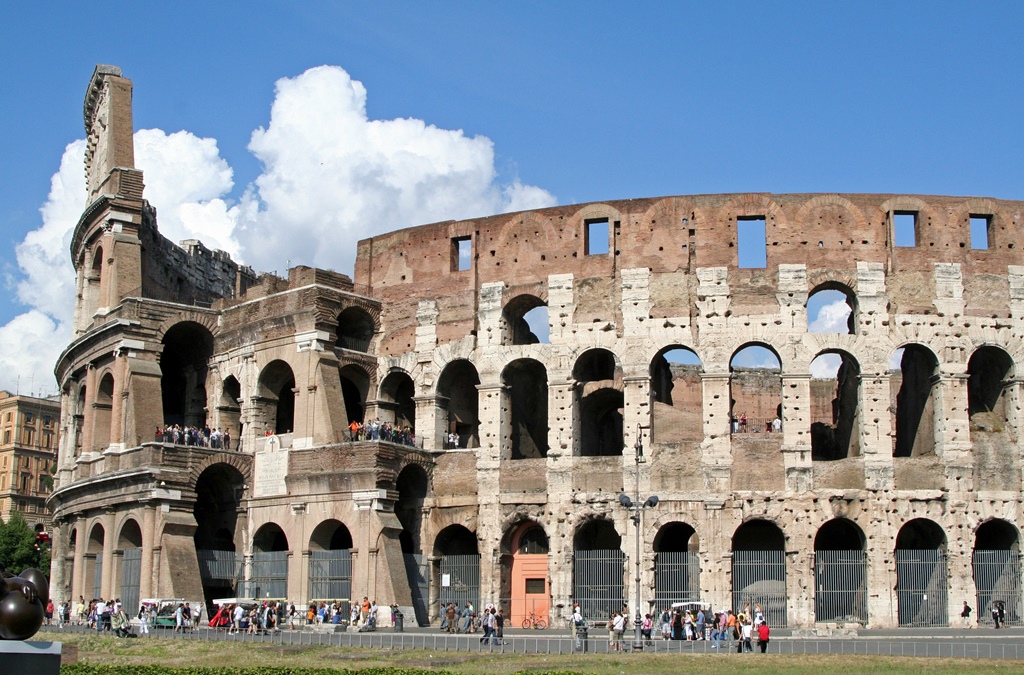
The Colosseum
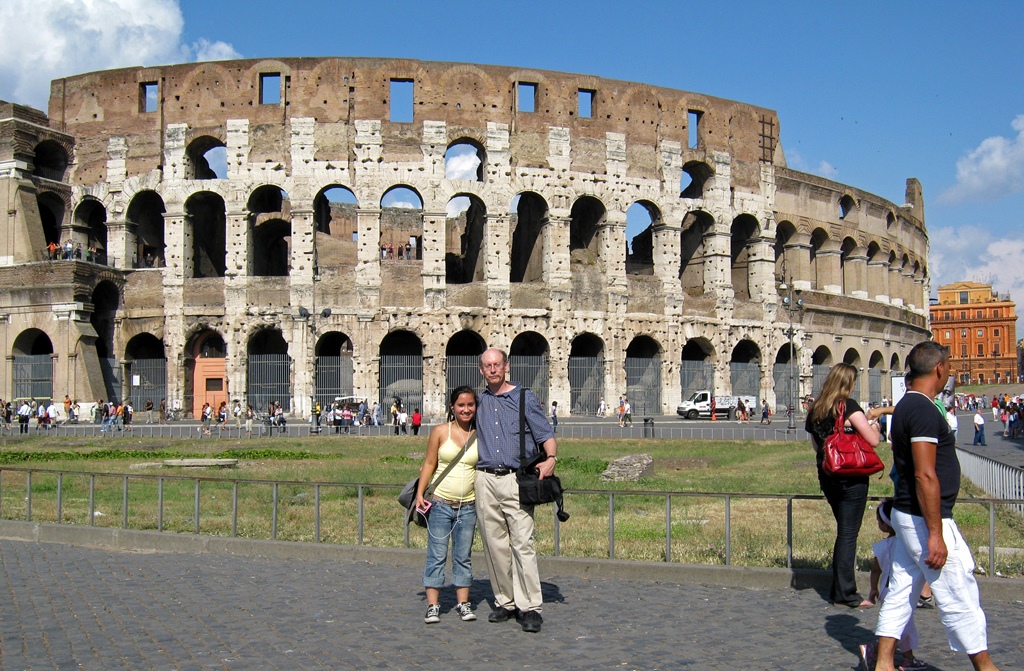
Connie and Bob and Colosseum

The Colosseum
At the time of our visit, admission to the Colosseum was sold as part of a combination
ticket which also included admission to the Forum to the west (more on this later) and
the Palatine Hill above it. It is also possible to buy this same ticket at the entrance
to the Forum, just up Via di San Gregorio, and the Forum line is much shorter.
Or, if you own a Roma Pass and are using one of your free admissions for this purpose
(highly advised for maximum cost-effectiveness), you can bypass the ticket line entirely,
as there is a special Colosseum entrance just for Roma Pass holders.
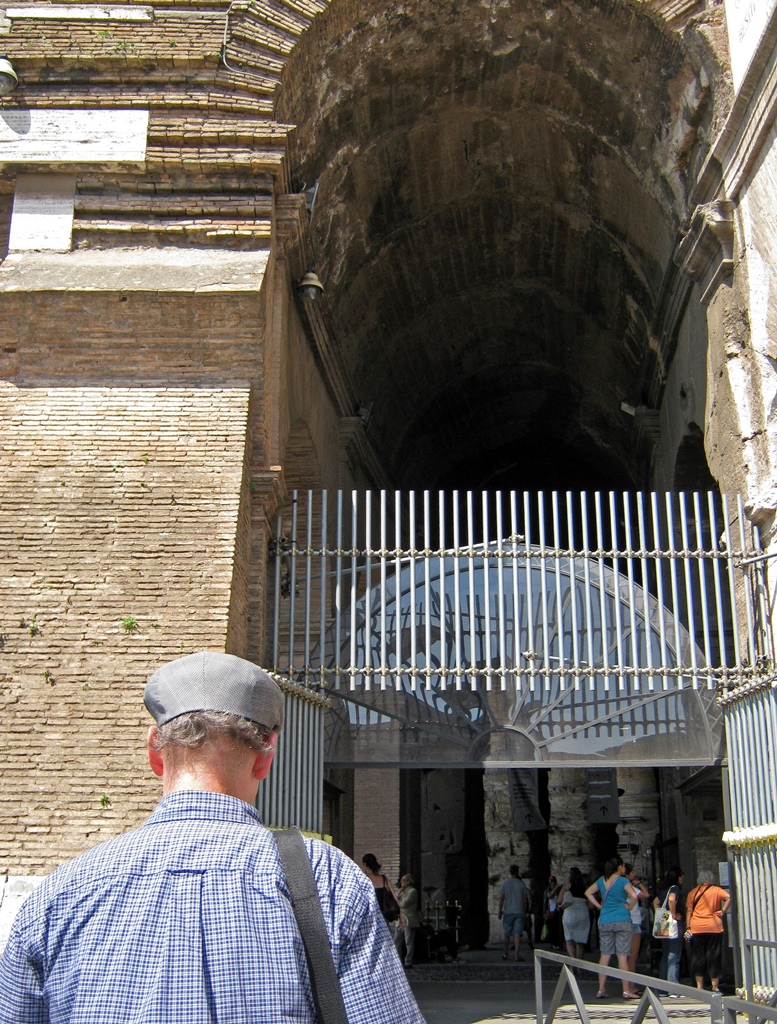
Bob Near Entrance
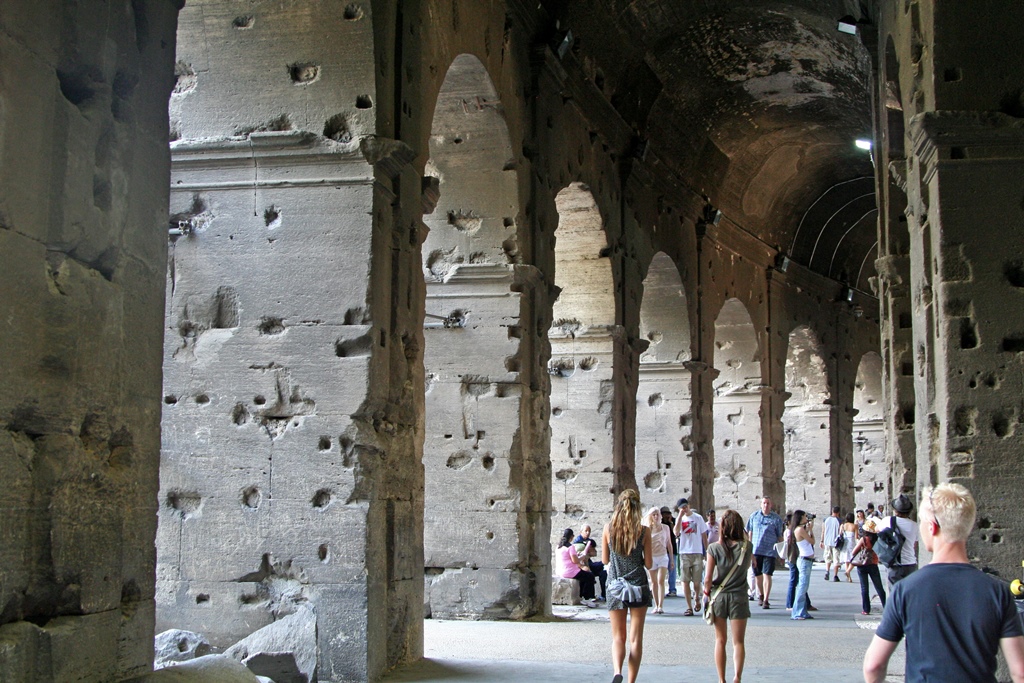
Inside Entry Passage

In the Entry Passage
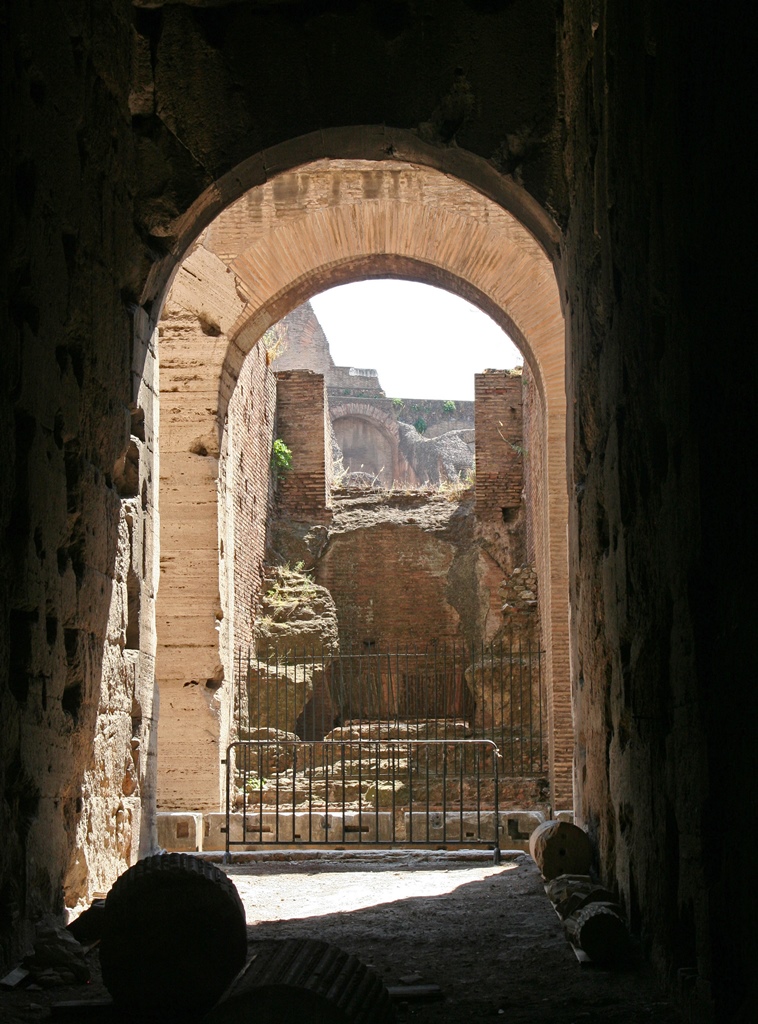
View Into Arena
As one would expect, the Colosseum is a very crowded place on a summer afternoon. There
are places where the throng is more compacted than at others, but solitude is never an option.
We did see a bride and groom who were somehow posing for pictures, though.
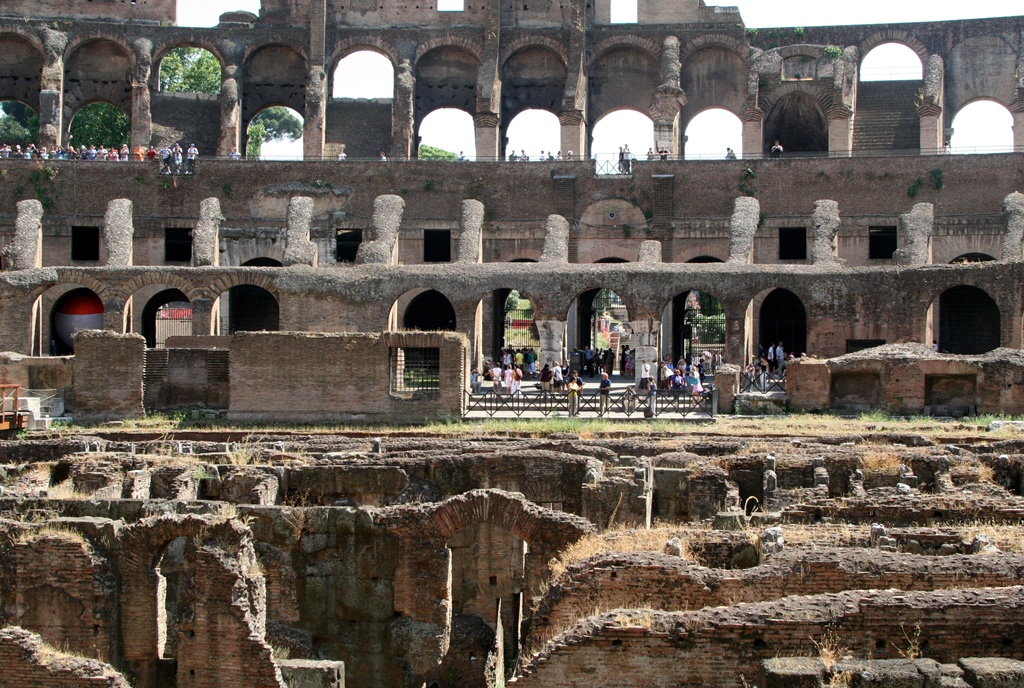
Inside the Colosseum
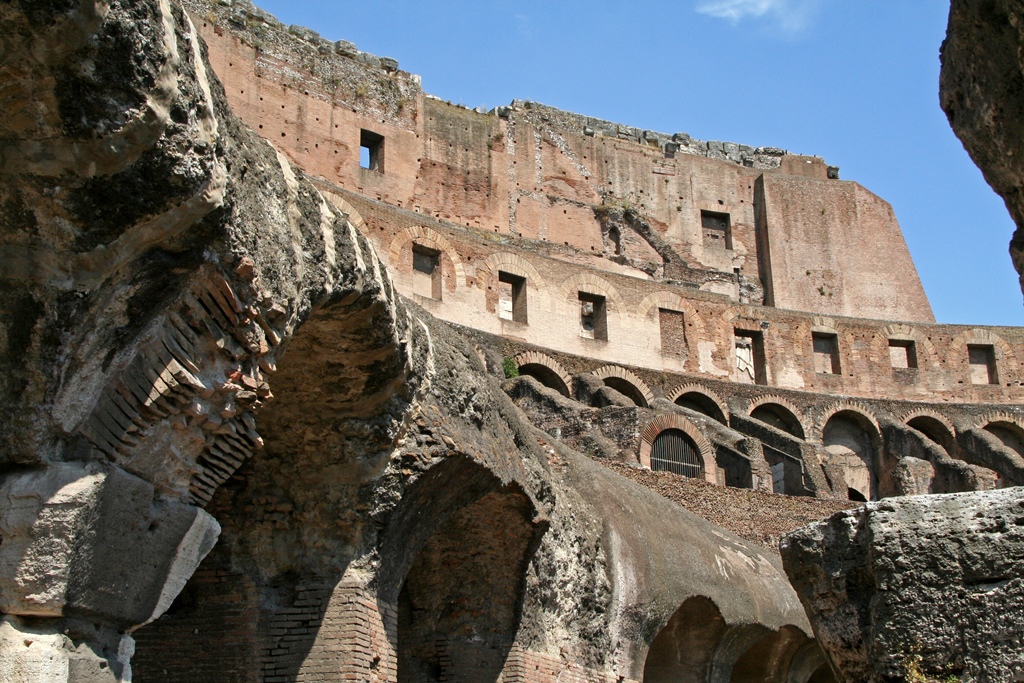
Inside Wall to East

Inside Colosseum with Bride and Groom

Walking Around with Connie

Connie, Hypogeum and Interior
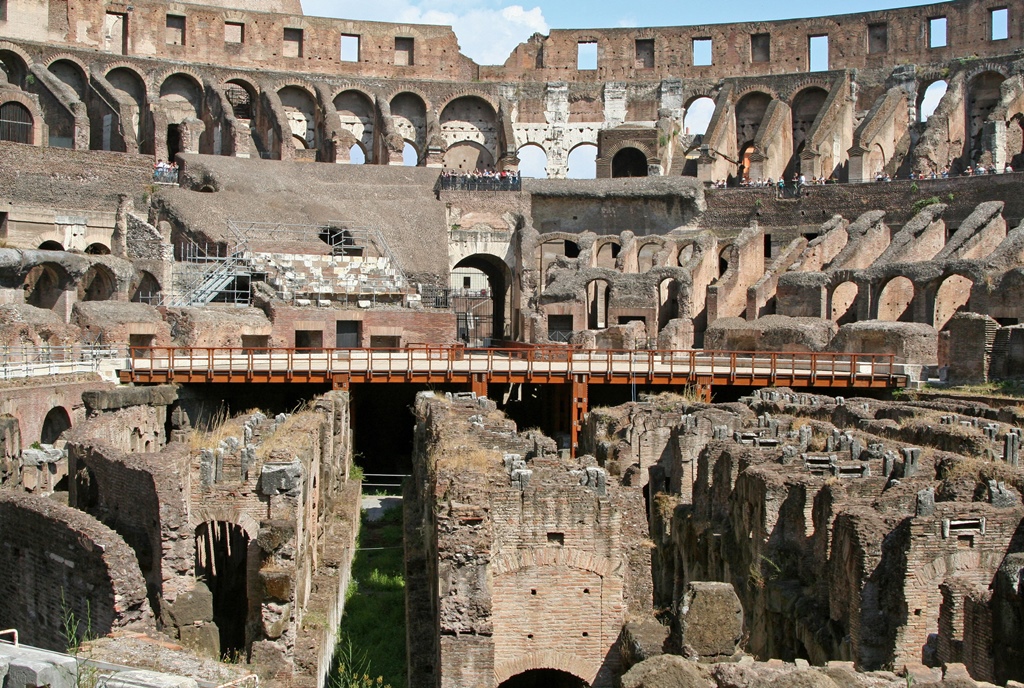
Hypogeum
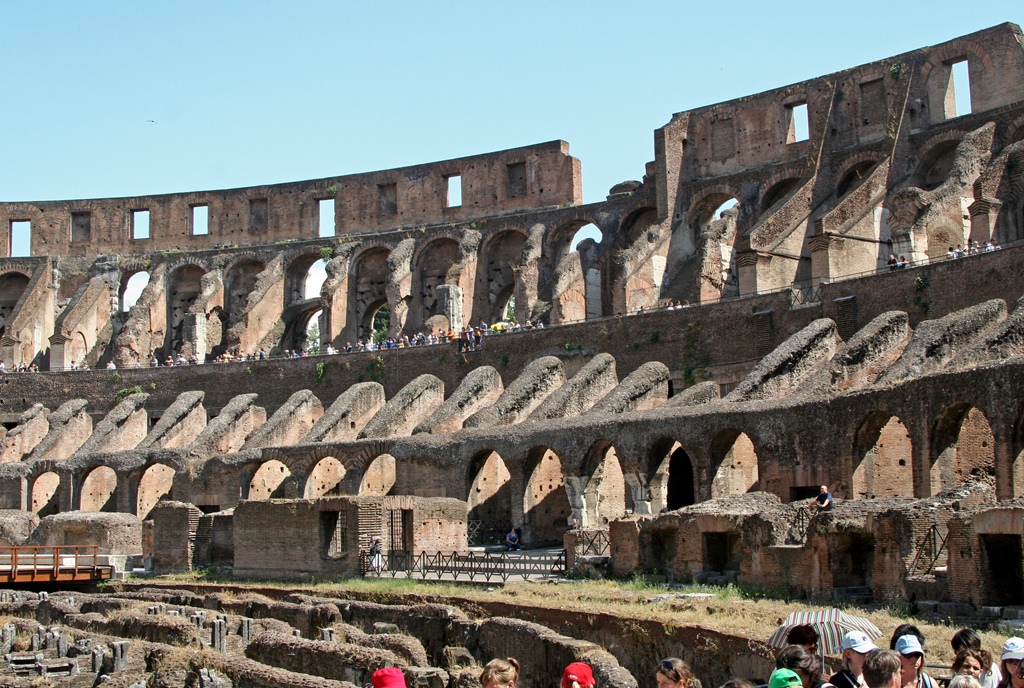
South Interior

View from South Interior
Tourists can pretty much go where they please, with portions of three levels open. The
hypogeum was not open to tourists during our visit, but apparently this has changed - check
the Colosseum website for details.
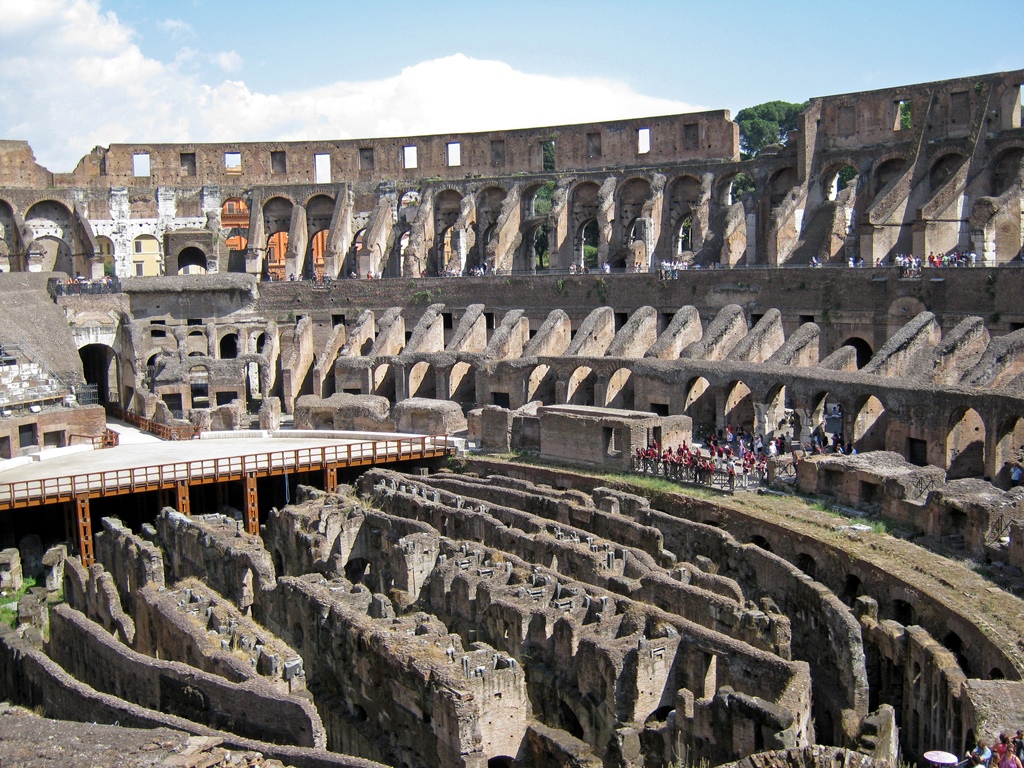
View from Upstairs
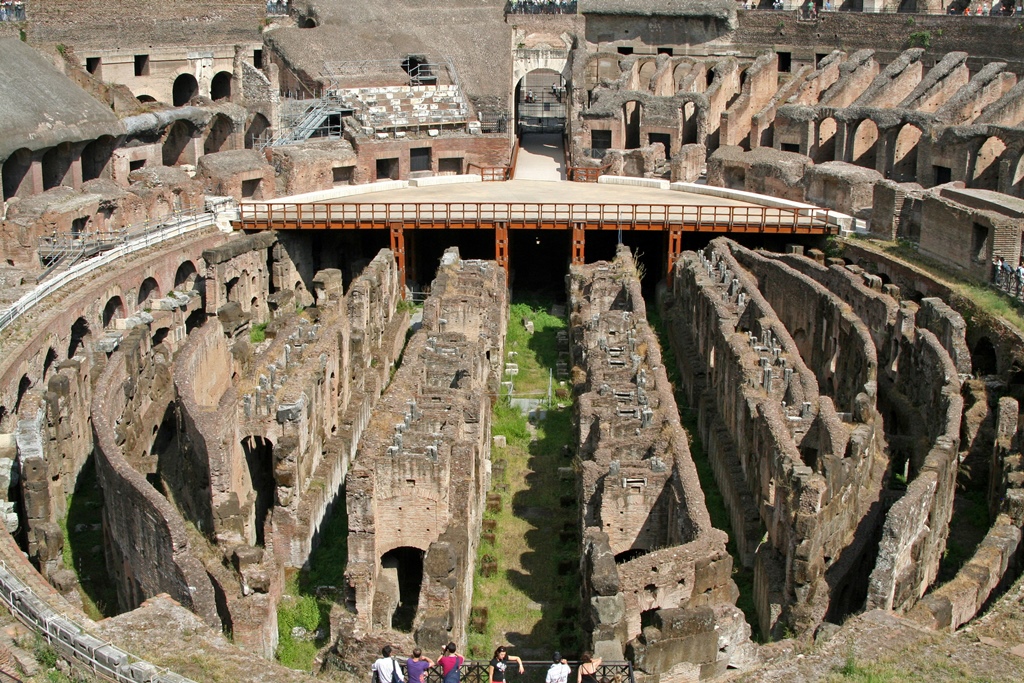
Hypogeum from Above
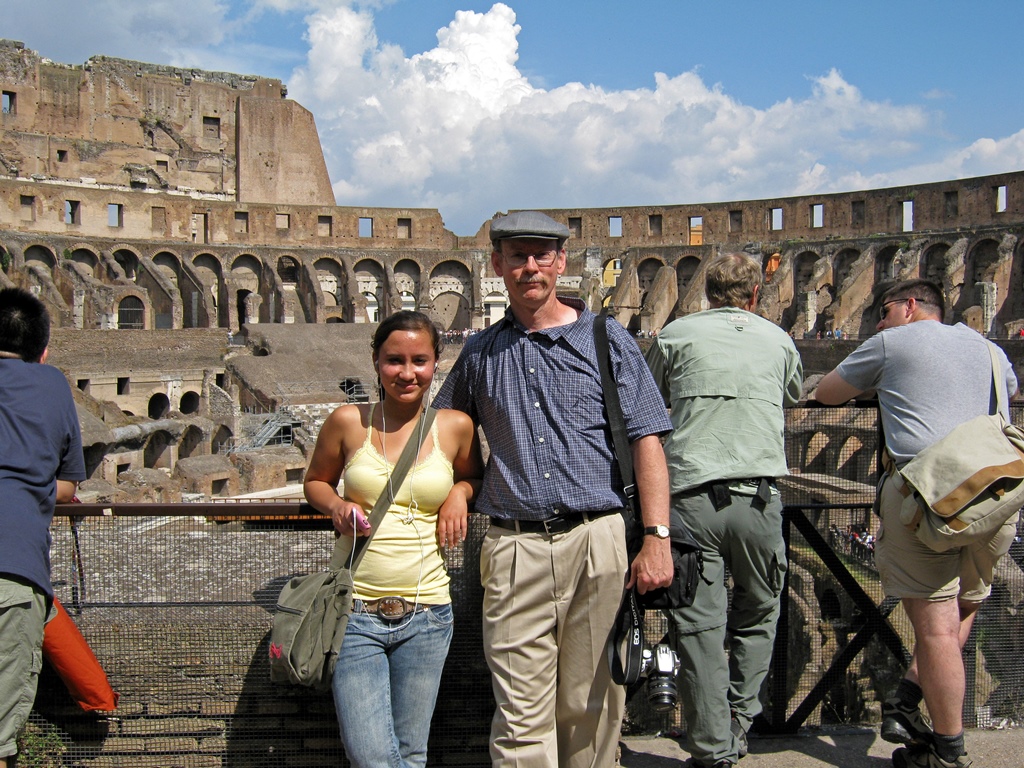
Connie and Bob
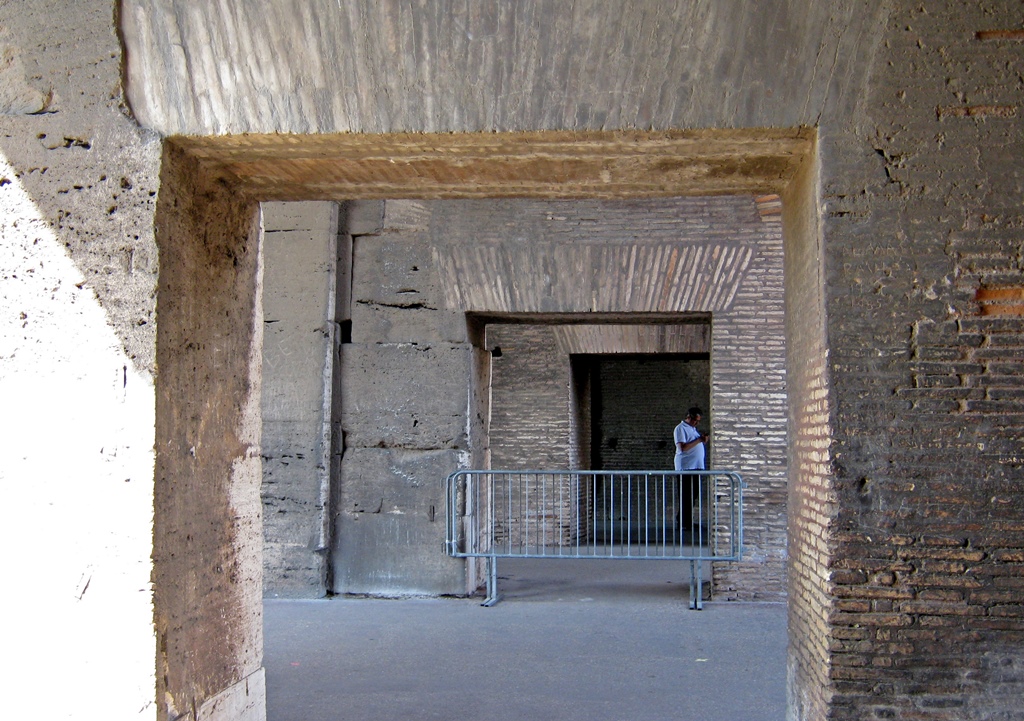
Square Archways
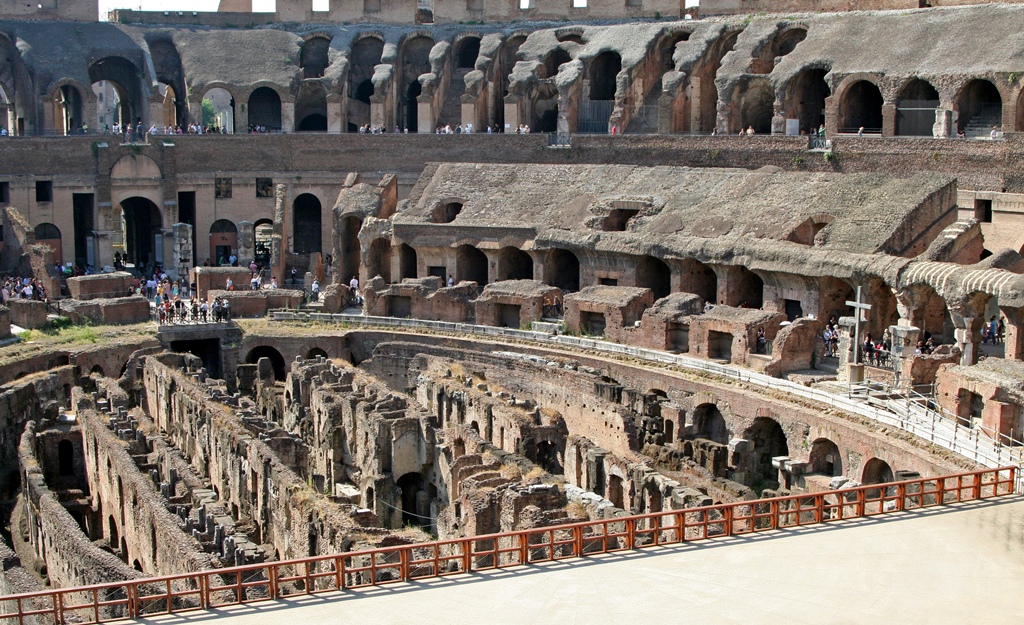
View from East Endzone

Nella Photographing Philip and Connie
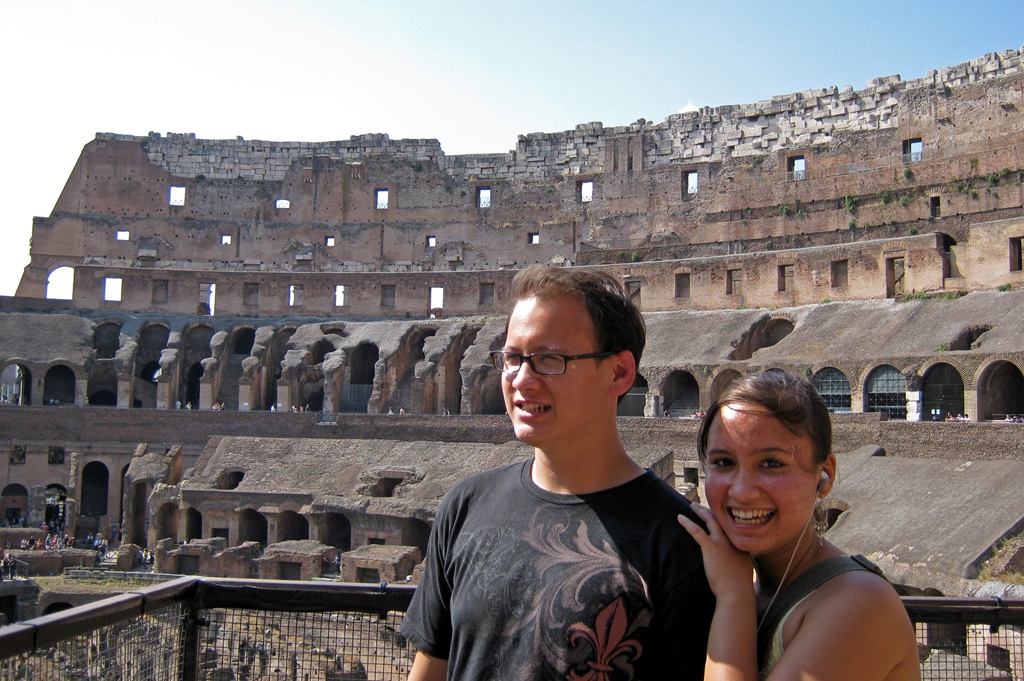
Philip and Connie
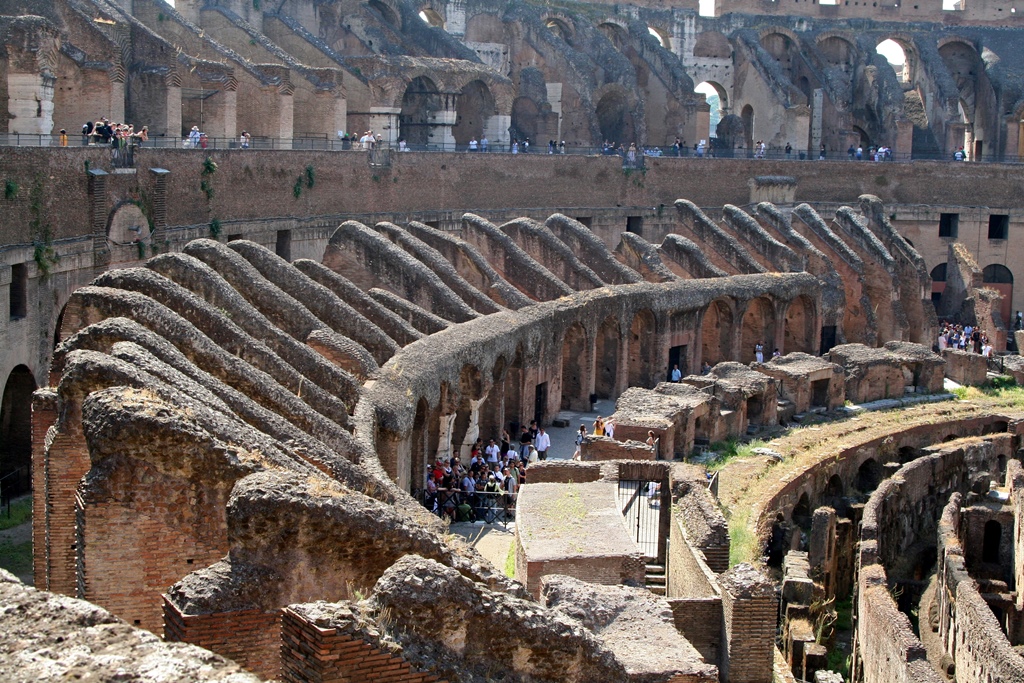
Southside Seating
At the time of our visit, there was an exhibit about Vespasian (under whom construction
of the Colosseum was begun) with statues and busts and assorted ruin fragments on
display. There is a small bookshop on the south side of the arena.
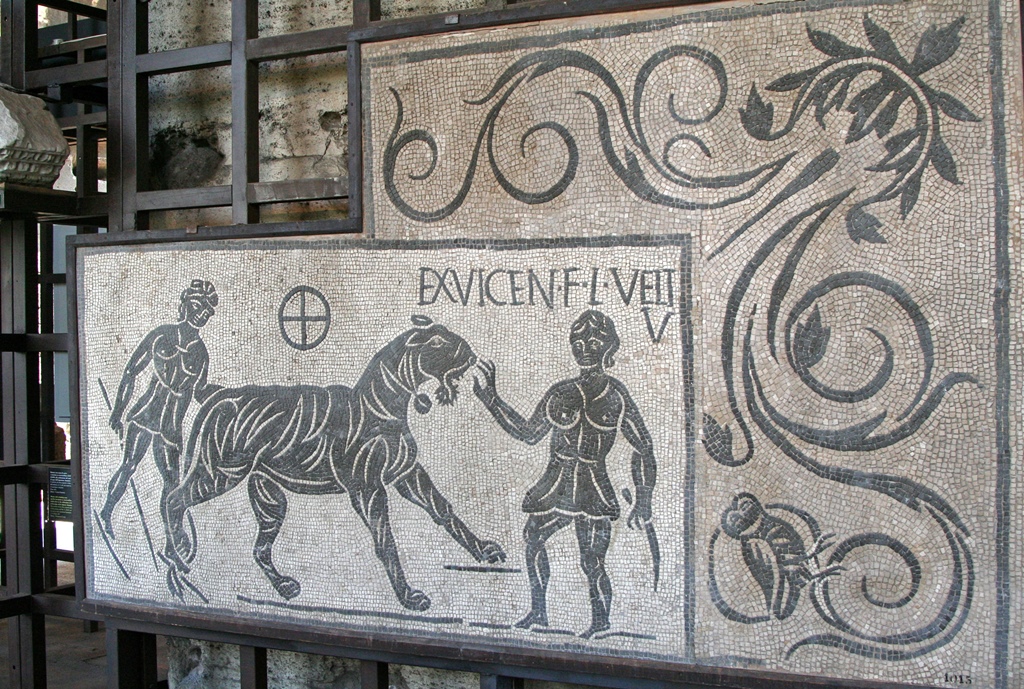
Mosaic
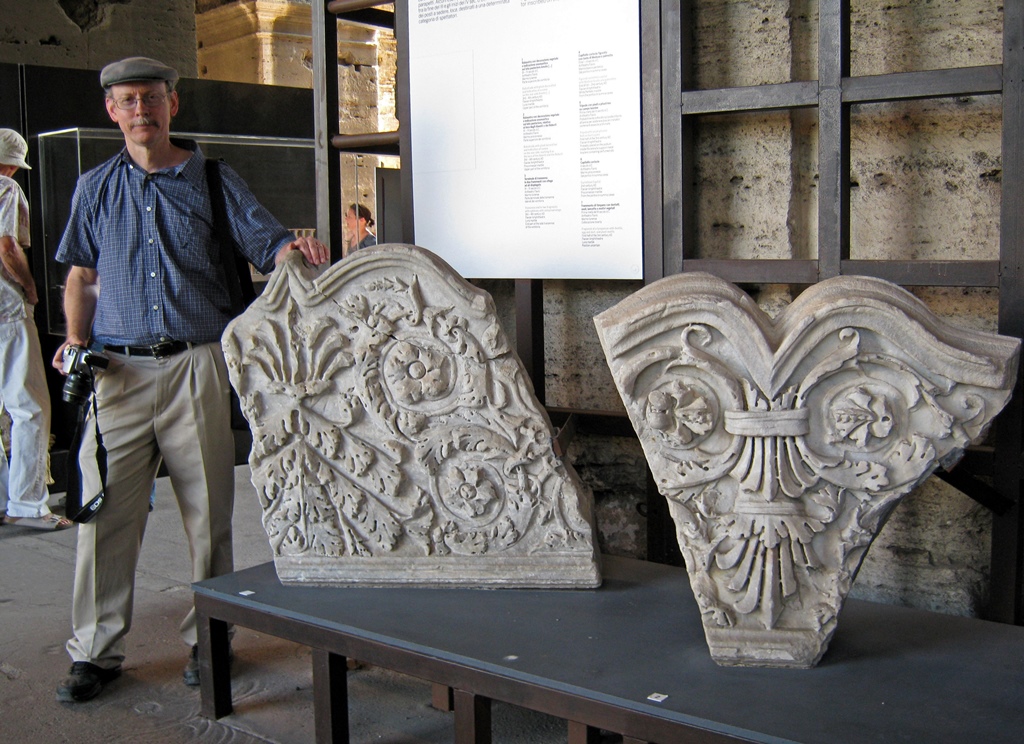
Bob and Fragmentary Decoration
At the west end of the arena, there is a point where one can look outward from the
Colosseum, to the west. There is a nice view of the Arch of Constantine, which is
enclosed in the pedestrianized area around the Colosseum. This arch is 69 feet tall,
and was built in 315 A.D. to commemorate the victory of Constantine I over Maxentius
at the Battle of Milvian Bridge in 312.
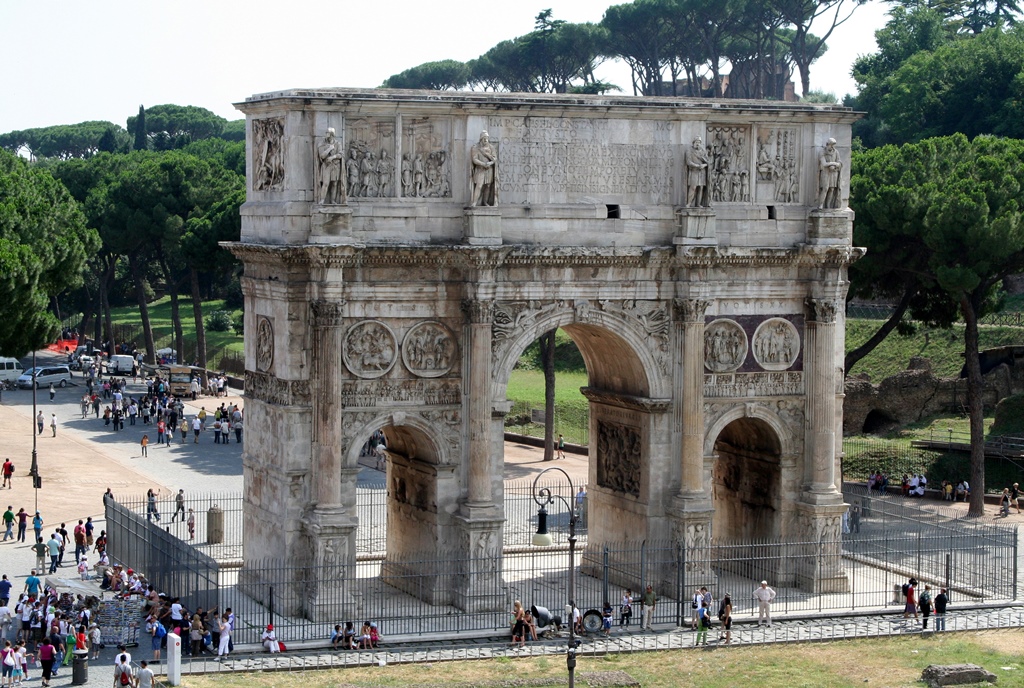
Arch of Constantine
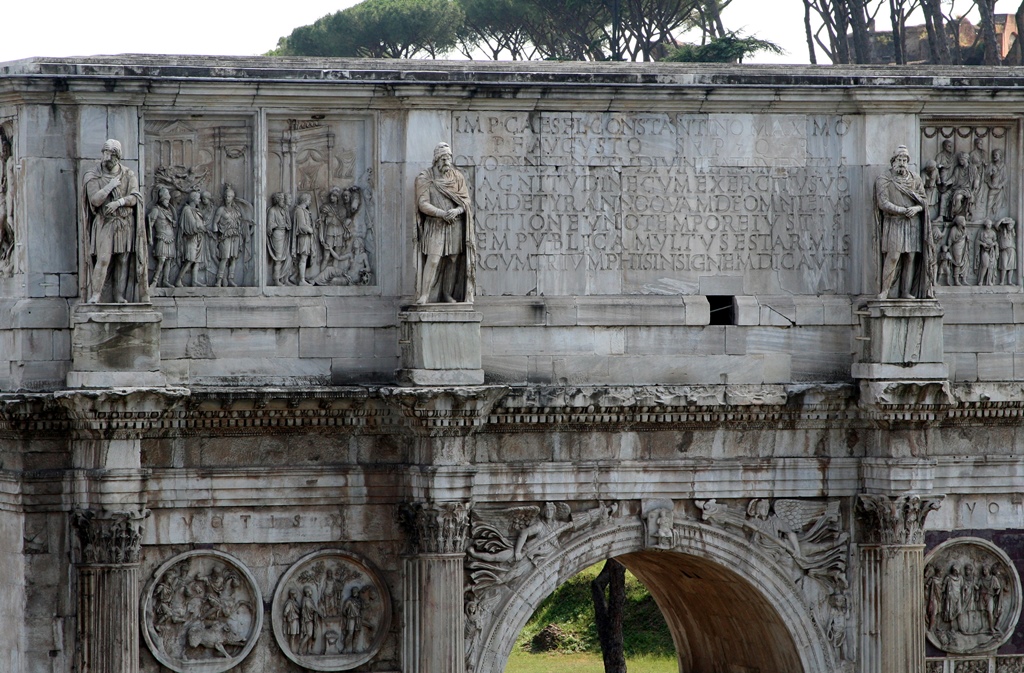
Arch Detail
Arch of Constantine
On exiting the Colosseum, we headed over to the Arch for a closer look.
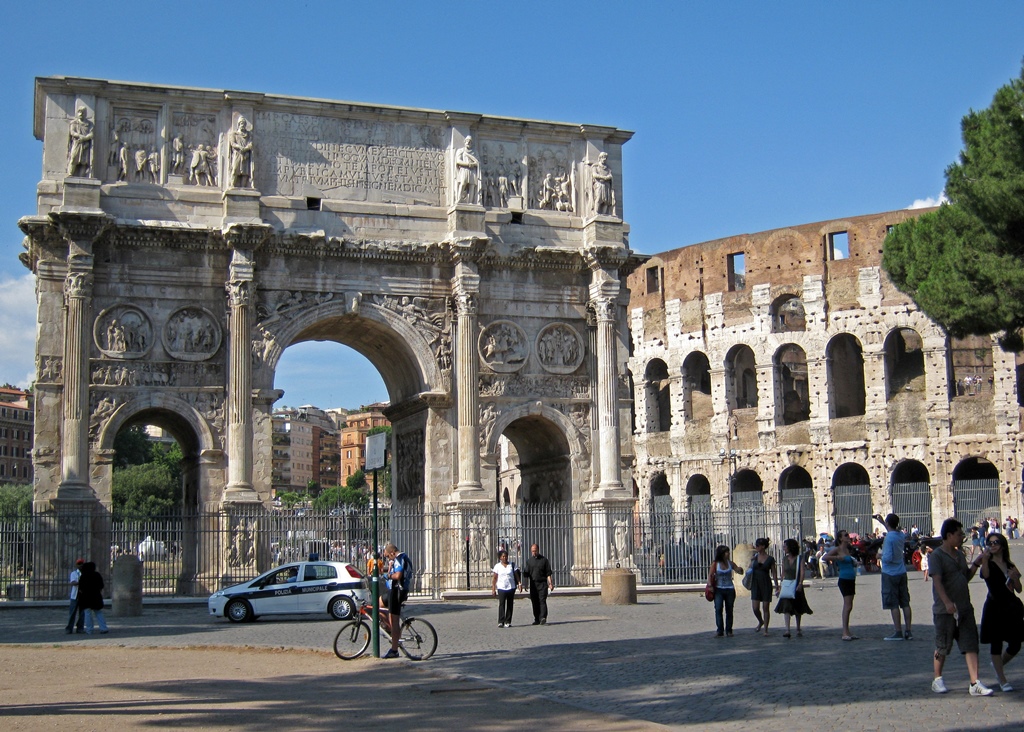
Arch of Constantine - South Side
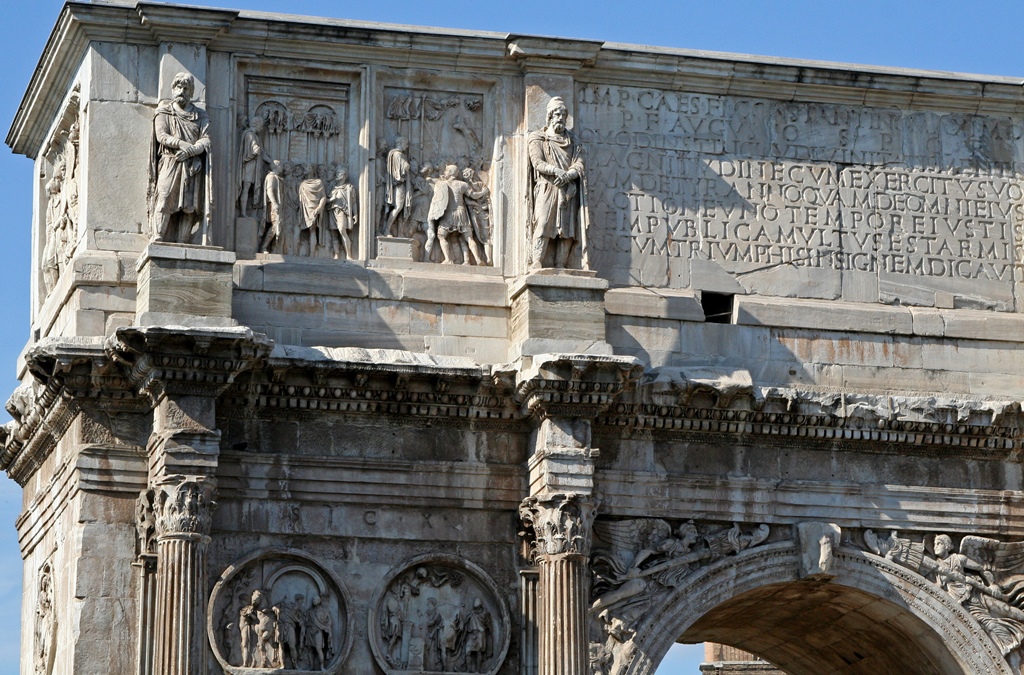
Arch of Constantine - South Detail
Arch of Constantine, Forum and Vendor
After having our fill of the Arch, we continued up Via di San Gregorio to the entrance
for the Forum, our next destination.

